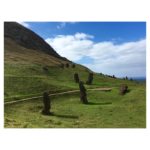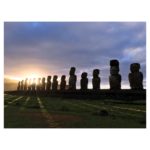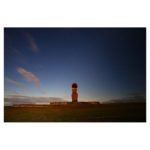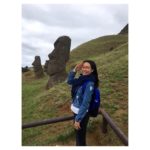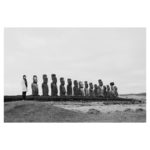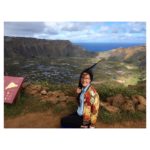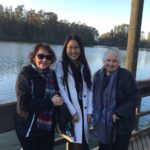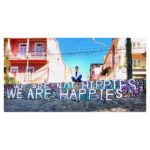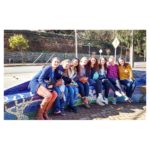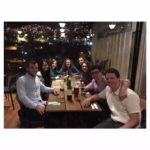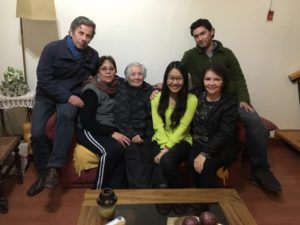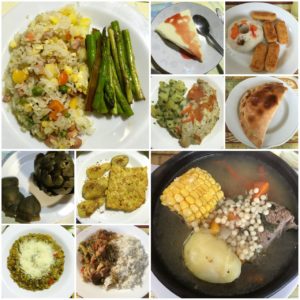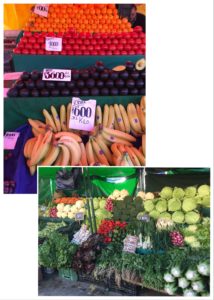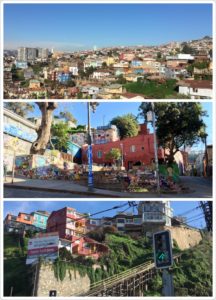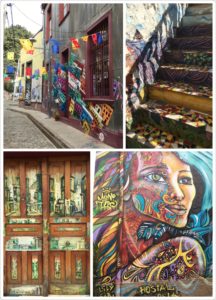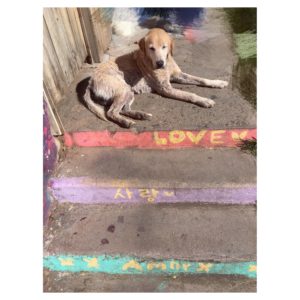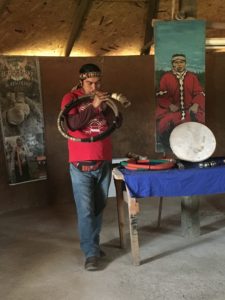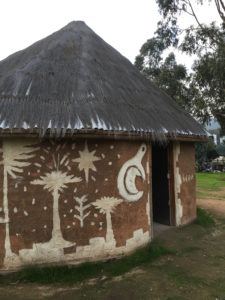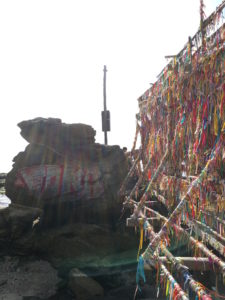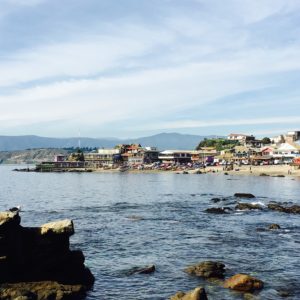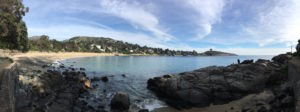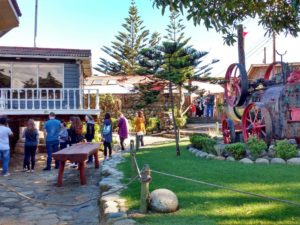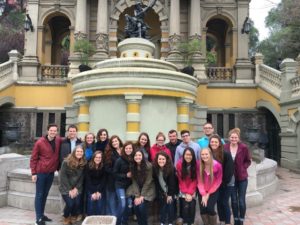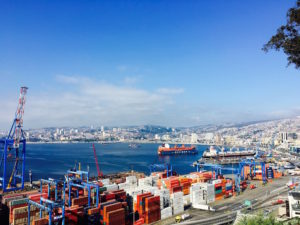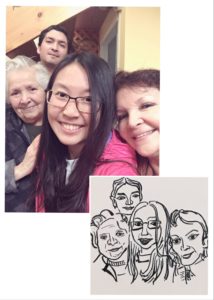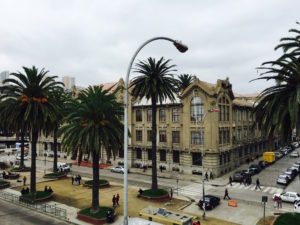Time flies! I can’t believe I have already spent the last five and half weeks here in Chile, living with my Chilean family and learning Spanish at the local university. The program ended this week, but my trip hasn’t finished yet. After coming to Chile, I realized how unique this country is, and had decided to pay a visit to Easter Island (Rapa Nui) for 4 days since it won’t be easy to have another chance or time to travel there again in the future. Luckily, my host mom has a friend, Claudia, living on the island and is willing to share her house with me for these days.
The flight from Santiago to Easter Island takes nearly 6 hours and only serves once a day in the early morning. I arrived at Easter Island around 12:30pm. Claudia recognized me immediately and welcomed me with a purple garland. The island is warmer than mainland Chile. There is a commercial center contains most hostels, restaurants and souvenir shops near the airport; while other parts of the island largely maintain the natural landscape and the original lifestyle.
It is a magical place! Hundreds of “Moai” scatter along the coastline of this small island; the aboriginal people still keep their traditional way of living and give dancing performances for the visitors at night; the local tour guide tells different legends of his ancestors and mysterious stories he experienced as a kid; the huge died volcano filled with clear water makes this place peaceful as well as dangerous.
I was amazed by these tremendous “Moai”. They all have distinct features and facial expressions that represent different kings from the past. I viewed them in the dawn light and in the dusk of the evening; under the bright sunshine and under the vast starry sky. They seem to be them guardians of this island, protecting it from any potential harm. The ocean surrounds the island, always shimmered in the sunlight, and makes the island prettier.
Besides the natural views, the human side of the island is also quite interesting. I met two boys from Taiwan during my first day of the trip, and we soon became travel mates. We went to this traditional dinner together and watched a fantastic show afterwards.
I am so grateful to have the opportunity to come here and learn more about this world. It makes me wonder how big the world really is and want to explore it more with my own eyes.
